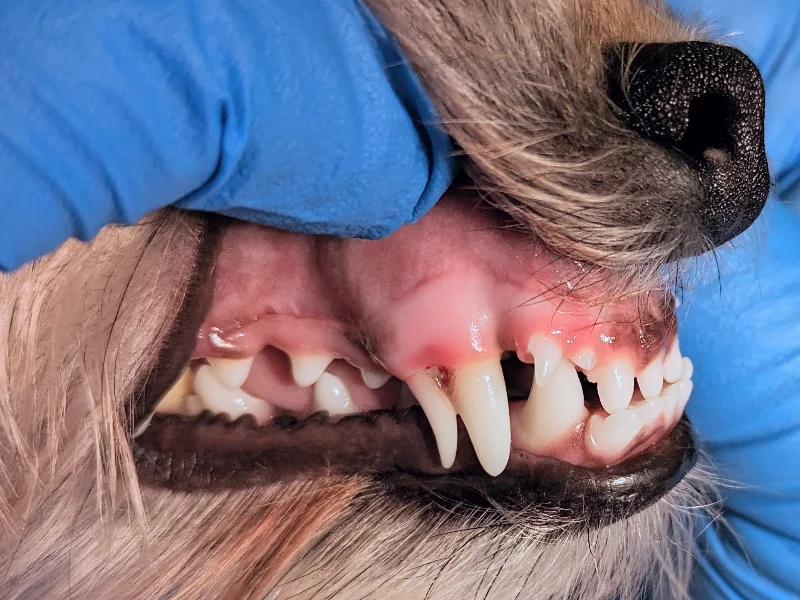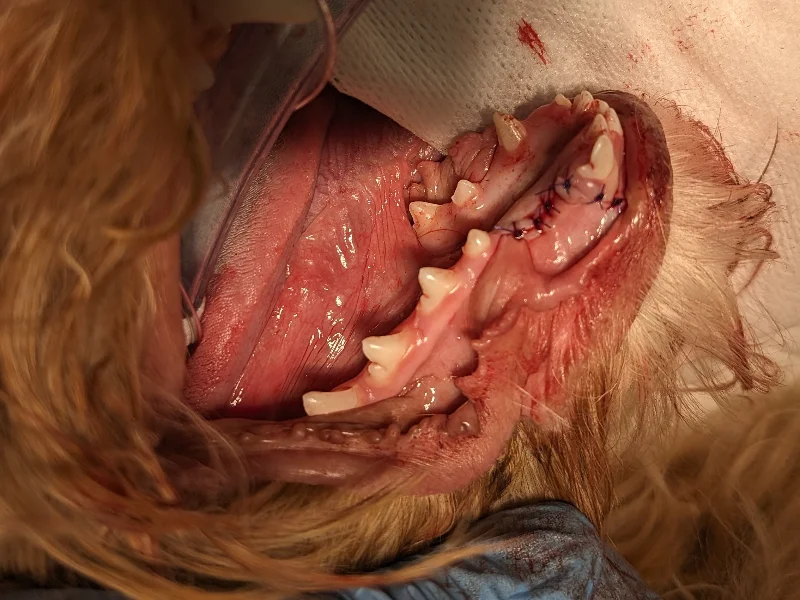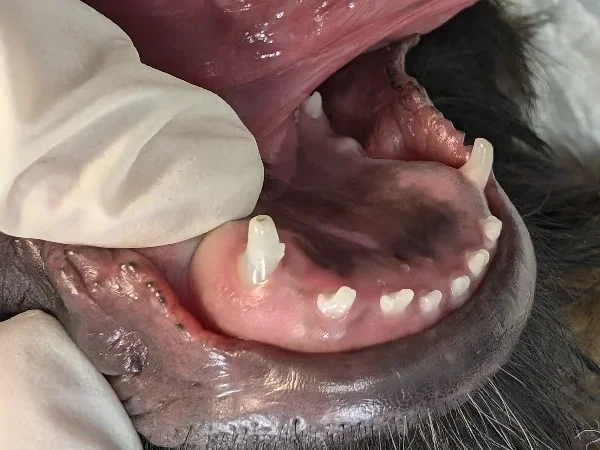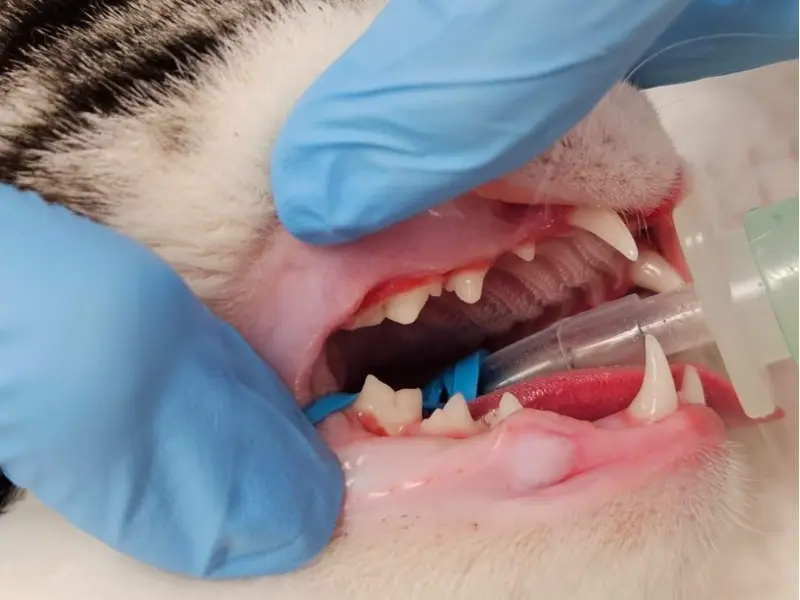A connection between the mouth and nasal cavities, often due to advanced periodontal disease, requires surgical repair to prevent chronic nasal irritation and infection.
Read MoreBlog Resources for Pet Owners
A condition involving excessive gum tissue growth in pets that leads to discomfort, difficulty eating and other dental issues. It is treated with surgical removal.
Read MoreSwellings in pets’ mouths may be benign or malignant, requiring evaluation and biopsy. Depending on the diagnosis, treatment varies from simple removal to more extensive surgery.
Read MoreA condition that occurs when a dog’s lower canines misalign and strike the soft tissue of the upper jaw, causing chronic pain and potentially severe oral damage.
Read MoreWhen a dog’s baby teeth fail to fall out, it can cause improper alignment of adult teeth, increasing the risk of malocclusion and gum disease.
Read MoreThis surgical procedure involves removing a pet’s lower canine teeth, typically to address issues like malocclusion, fractured teeth or advanced periodontal disease.
Read MoreEncouraging play with a firm, appropriately sized ball to apply pressure on developing teeth, potentially correcting misaligned canines and preventing future issues.
Read MoreFractured, persistent or misaligned baby teeth in puppies and kittens may require extraction to ensure comfort, prevent abscesses and avoid long-term dental issues during development.
Read MoreThis condition occurs when a tooth in the upper jaw damages the tissue near a lower molar, causing discomfort and potential periodontal disease, often requiring reshaping or extraction.
Read More













